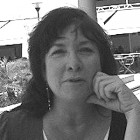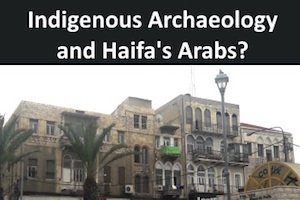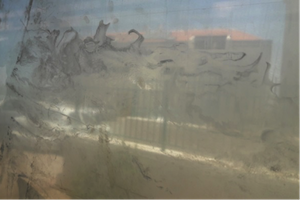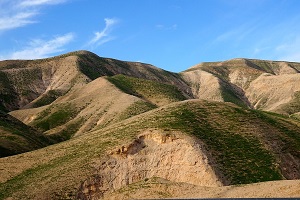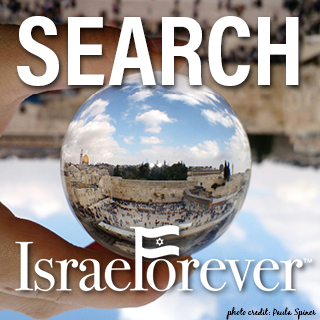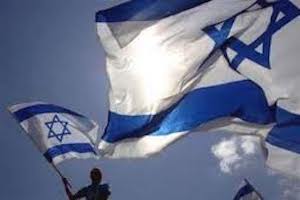60 Minutes On The Steps Outside Of Kiryat Arba
By Sheri Oz
I went to Kiryat Arba for the Passover Seder this year and I want to tell you something about my visit.
Kiryat Arba is a town of about 8000 Jews, founded in 1968, just one year after Judea and Samaria were liberated from twenty years of Jordanian occupation. It is on the outskirts of Hebron, the original center of Israelite life and the place where our peoplehood was established. The Cave of the Patriarchs (Ma’arat HaMachpelah), the burial site of Abraham, Isaac, Jacob, Sarah, Rivka and Leah, features prominently in Hebron. In spite of its centrality to us, there are many Jews who think we should get out of Hebron and Kiryat Arba and let it become part of the Palestinian state they believe should arise. And they think I should not support its existence by going there.
* * * * *
The day after the Seder, I began the walk down from Kiryat Arba to Ma’arat HaMachpelah. It was a beautiful day. I did not take my camera as I was staying with an observant family.
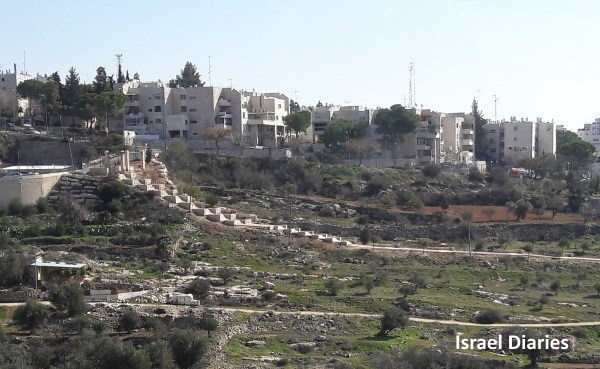
Steps outside Kiryat Arba
Just about 100 meters or so from my friends’ house is the gate opening out onto the steps down the hill toward Hebron. A young guard stood at the gate. Another guard stood half-way down the steps and at the bottom, where the steps meet the road into Hebron, were more guards. I could see soldiers posted about every 30 meters or so along the road, and more in the hills opposite.Here is a photo I took of the steps from an opposite hill, while on a tour last year:
The sun was shining and the air was somewhere between springtime cool and summer hot. The hills were green, but not lushly so. Lots of rocks jutted out of the ground. Minarets dotted the landscape among the Hebron rooftops with their black water tanks, and the muezzin would blast out across the rolling hills at intervals over the day. At the time I went out, it was quiet.
I stopped at the bottom of the stairs and told my friends to go on without me. I knew I could probably walk the whole way there, but, still not totally recovered from surgery, I was not sure I would be able to make it back. So I turned around and began climbing the stairs up toward the gate.
The stairs are wide; six or seven people at a time might be able to use them, going up and down side-by-side. With a knee-high rock wall on both sides of the stairway, it forms an orderly curving path contrasting with the rough terrain through which it stretches down to the road below.
I stopped to rest on the rock wall under a tree. But, with only a dog stretched out in a shady spot near to me, I felt like a sitting duck even though the Arab houses were hundreds of meters away. If there were snipers in any of the windows, I was an easy kill. So I continued higher and sat down beside a soldier on guard.
He was wearing layers of clothing because he had guarded all night and at night and early morning it was quite cold. By this time, however, he was suffering in the heat. Not only layers of clothing, but also carrying heavy equipment, prepared for any eventuality.
Still in training, he was brought in as reinforcement for the holiday, and will be there till Sunday (which, as I write this, happens to be today). We talked about how he feels to be guarding Kiryat Arba and he told me he was happy to. He was sad at missing out on Seder night with his family, but he was happy to be keeping the rest of us safe.
He talked about playing football with a water bottle with a group of Arab kids when he was guarding on the hill opposite. The contrast between laughing with the kids and having to be wary lest there were older Arabs around who wanted to do him/us harm, was disconcerting for him. (I hope he never loses this ability to sustain the complexities of our lives here.)
He said he hopes he is never in the position Elor Azaria was in. He feels confident that he would be able to distinguish between a situation demanding shooting and a situation that does not. At the same time, he is apprehensive of the moment when he will have to shoot or when he will witness a friend at arms getting shot. He is sure that would change him forever. Yet, he volunteered for combat service and feels it an honour to serve.
After a while, I got up to continue on up the hill. He thanked me for engaging him in conversation as it helped with the boredom of guard duty. I thanked him for being there.
Then I sat a few moments with the guard at the gate. He was lucky enough to have a cool breeze waft across his spot, a kind-of patio with a cement roof offering protection from the sun.
As I got up to go through the gate, a rambunctious group of about 6-7 boys with earlocks bouncing about their shoulders whizzed past me and bounded down the steps in the direction of Hebron and the Ma’arah. They were shouting and laughing, in their own little world.
I passed through the gate and back into town. It was a quick transition from the eerie feeling I had of being in a no-man’s-land rife with danger on one side of the fence, to a sense of being in a normal town where I have friends on the other side. I bet the boys did not feel as I did – I am sure they are used to going down the hill from Kiryat Arba to pray in the Ma’arah. Perhaps one or two more times there and I will also lose that eerie feeling, but hopefully not the wonderment at being at the spot at which the Jewish people began being a People and the miracle of being a People still, thousands of years later.
And all the while, I could not free myself of the discomfort I experienced when some friends visibly winced when I told them I was going to Seder in Kiryat Arba. Perhaps they have just lost (or never had) a sense of wonderment at the miracle that we Jews are.
Recommended for you:
#SHABBAT TALKS
Keep the conversation lively and bring a touch of Israel into your Shabbat with these great discussion resources today!
About the Author
